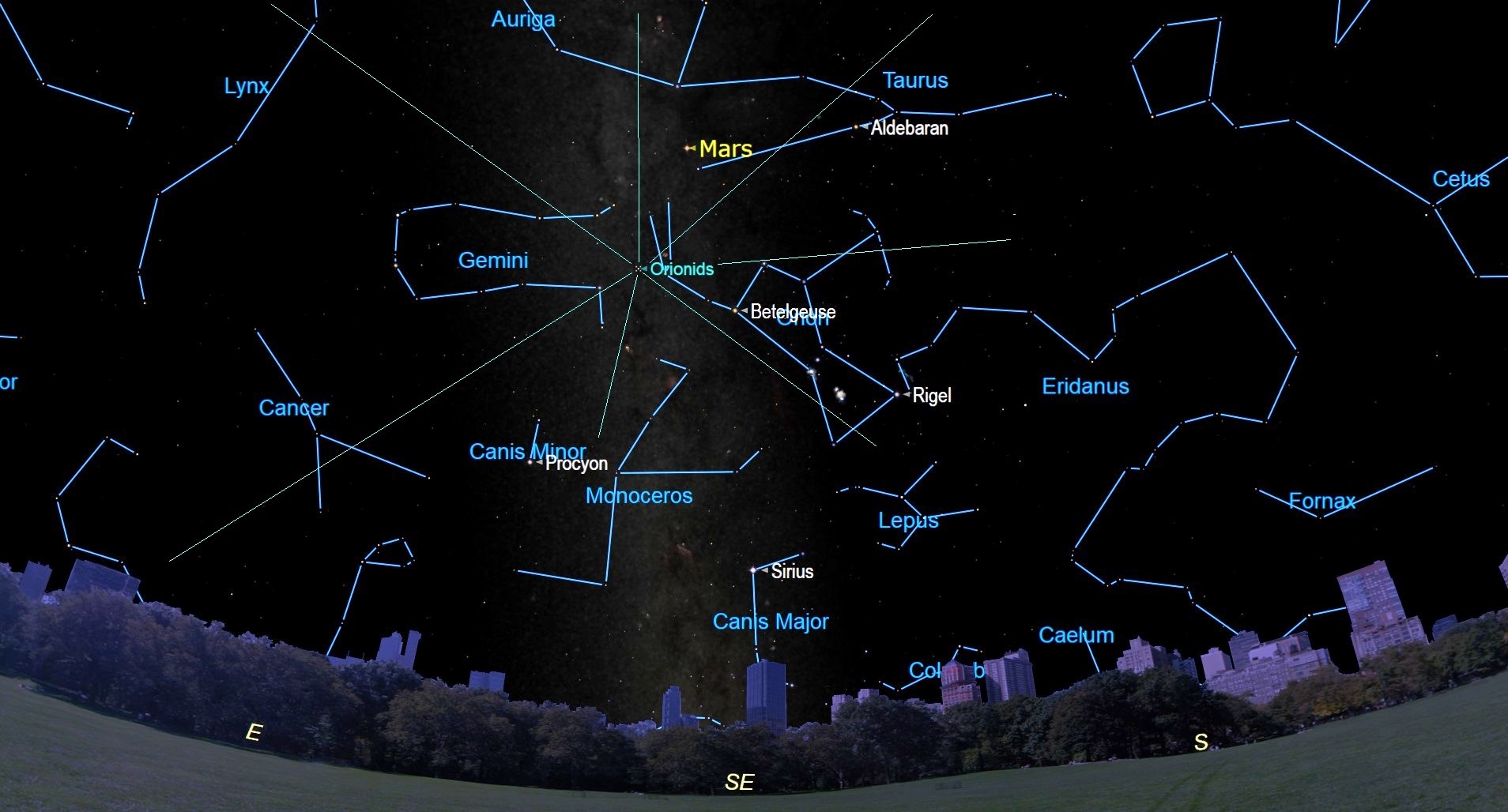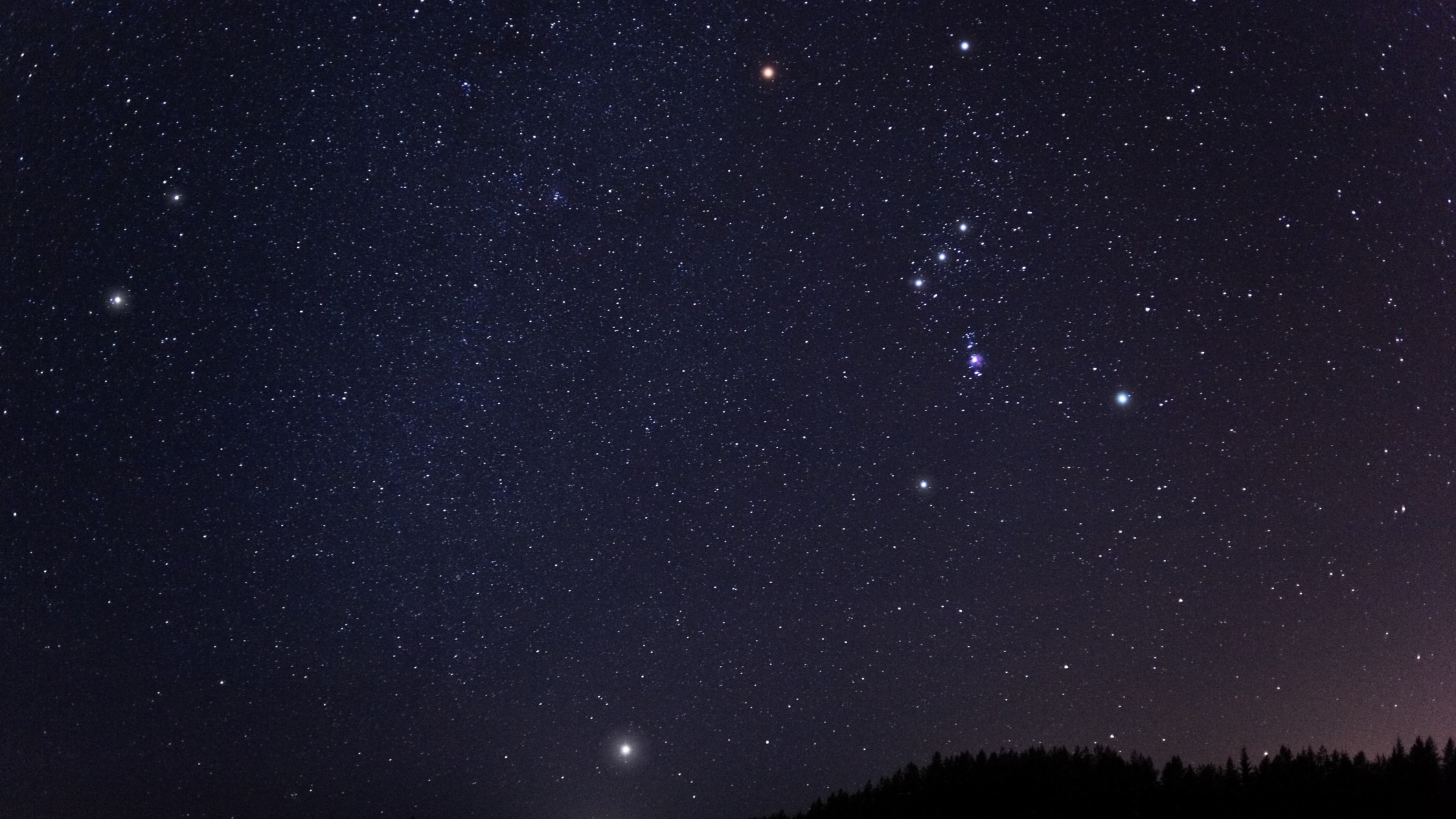Don't miss the Orionid meteor shower peak tonight (Oct. 21)
Bring a warm blanket, lie back and watch the remains of Halley's Comet burn up in our atmosphere.

Editor's note: Be sure to check out our reader photo submissions of this year's Orionid meteor shower for some stellar meteor photography.
The Orionid meteor shower peaks overnight tonight (Oct. 21), making this an excellent time to get outside and see some fireballs streak through the atmosphere.
The viewing conditions for this year's Orionid meteor shower are favorable, as the moon will be in a waning crescent phase and will be only 17% illuminated. The Orionids are considered to be one of the most reliable meteor showers after the Geminids and Perseids, and are known to produce dozens of meteors per hour, making this year's shower an excellent opportunity for some late-night skywatching.
Our best cameras for astrophotography and best lenses for astrophotography can help you take the best meteor shower images you can, no matter your skill level.
The Orionids get their name from the fact that the meteor shower's radiant — the point in the sky from which the meteors appear to originate — is in the Orion constellation next to the Hunter's club. In the Northern Hemisphere, Orion will be located in the southwestern sky; in the Southern Hemisphere, the constellation will appear in the northwestern sky.
Related: Orionid meteor shower 2022: When, where & how to see it
Each year toward the end of October, the Earth passes through a swarm of meteoroids left behind in the wake of Halley's Comet. As these bits of dust encounter our planet's atmosphere, they encounter friction and ignite the air in front of them. Even a tiny pea-sized piece of Halley's debris can burn with enough incandescence to be seen from 60 miles (100 km) below on the ground.

The best time of night to view the meteors will be in the early morning hours on Saturday (Oct. 22) just before dawn. Pre-dawn meteors tend to be brighter than those earlier in the night due to the fact that Earth at this time of night is moving toward the direction in which the meteors are originating. Meteors in the early morning hours will appear faster and brighter than those seen earlier in the night.
Get the Space.com Newsletter
Breaking space news, the latest updates on rocket launches, skywatching events and more!
To catch a view of the shower, put out a comfortable reclining chair, find an area with as little light pollution as possible and make sure to stay warm. Give your eyes at least 30 minutes to adjust.
Editor's note: If you catch a photo of the Orionid meteor shower you'd like to share with Space.com and our news partners for a story or image gallery, send images and comments in to: spacephotos@space.com.
Follow Brett on Twitter at @bretttingley. Follow us on Twitter @Spacedotcom or on Facebook.
Join our Space Forums to keep talking space on the latest missions, night sky and more! And if you have a news tip, correction or comment, let us know at: community@space.com.

Brett is curious about emerging aerospace technologies, alternative launch concepts, military space developments and uncrewed aircraft systems. Brett's work has appeared on Scientific American, The War Zone, Popular Science, the History Channel, Science Discovery and more. Brett has English degrees from Clemson University and the University of North Carolina at Charlotte. In his free time, Brett enjoys skywatching throughout the dark skies of the Appalachian mountains.









